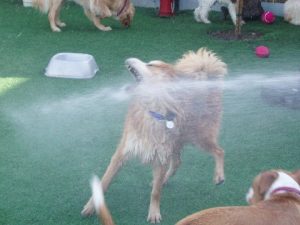 Water may arguably be the MOST important nutrient but for sure it is one of the six essential nutrients dogs and cats need to survive! That’s because, like us, our pets are close to 80% water, so they need a regular supply. In case you’re taking notes, the other five essential nutrients your furry best pal needs to grow healthy and strong include proteins, fats, omega 3 and 6 fatty acids, carbohydrates and vitamins.
Water may arguably be the MOST important nutrient but for sure it is one of the six essential nutrients dogs and cats need to survive! That’s because, like us, our pets are close to 80% water, so they need a regular supply. In case you’re taking notes, the other five essential nutrients your furry best pal needs to grow healthy and strong include proteins, fats, omega 3 and 6 fatty acids, carbohydrates and vitamins.
An article published in Scientific American Magazine back in 2009, notes that although we traditionally accept that felis catis became domesticated about 3,600 years ago in Egypt, recent research places the domestication of felines in the Middle East, as early as 10,000 years ago. At this time, people started growing crops, and scientists believe cats moved into close proximity to hunt mice that were drawn to our grain stores. Elizabeth J. Colleran, DVM/MS and Feline Diplomate in Chico, California explains, “Cats obtained a large percentage of the moisture they needed from mice who [also] are 70-80% water. As a result, they don’t have as much of a ‘thirst’ center in their brain,” since their ancestors pretty much consumed all the water required from their diet. “Along came humans,” who probably didn’t care for their furry family members dining on rodents, and “who decide convenience is important so create [dry] cat food containing only 8-10% moisture,” laments Colleran. Unless the cat in your care drinks from her water bowl, you can see there is a deficiency you need to make up for.
On the other claw, canned diets typically are ¾ water, so cats consistently ingesting this type of nutrition could meet most of their water requirements through food alone. Soft canned diets alone, with nothing to clean the teeth and gums can contribute to poor oral health, so diligently provide kitty with regular dental care.
Canine familiaris however, domesticated 10,000 or more years ago, drinks voraciously by most accounts. It’s important however, to be sure dogs don’t “tank up” when over-heated as they will most likely regurgitate and can aspirate into their lungs. Keep them well-hydrated at all times, giving small amounts of water on hikes as you go.
You Can Lead a Cat to Water, but…
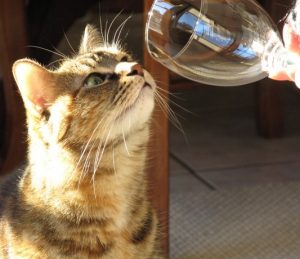
Many of our feline friends are fascinated by water – dripping from a faucet, swirling down the toilet or basin, skimming over rocks in a fountain or stream, but making her drink may be another thing altogether.
The weaning process for kittens isn’t just about learning to eat nutritious wet and dry food. It is also about the introduction of drinking H2O. Once kits are no longer consuming mom’s milk (4-6 weeks of age), it is vital that fresh clean water is plentiful for lapping, preferably from a shallow bowl. Some kittens have been known to splash about during their initial attempts, and a few even have sneezing fits, so help yourself stay neat and clean by placing a mat or paper towels under the bowl, but just keep it filled.
If your adult cat isn’t drinking, you might have to outsmart her. Liz Bales, VMD, Red Lion Veterinary Hospital in New Castle Delaware explains, “Cats are likely to drink more water if it is placed in a separate location from their food. I have recommended this to many clients who have reported noting a significant increase in water intake when they move their cat’s bowl.”
Dr. Colleran adds, “Bowls should be wide enough for cats to drink without their whiskers touching the edges. Pay attention to the shape cats will drink out of willingly and replicate that elsewhere.” Some may like your china tea cup or coffee mug while others will prefer a taller high-ball glass! “Don’t ever force cats to share water resources,” cautions Colleran. If you have a clowder, there should be plenty of water-filled reservoirs to go around.
If your four-clawed pal is still finicky, try bottled or filtered water. Tap water often has too high a concentration of minerals, including chlorine and she may not like the taste. Who could blame her?
Water fountains can be found in pet stores and online and have coerced many a feline to partake. Just clean them regularly, even all the small parts, to keep your cat’s water source bacteria-free!
Another trick? Try tuna water (what you pour from the can), low-sodium chicken broth or even clam juice. Feed it to your cat straight up or freeze it into ice cubes for a refreshing treat during the cooler parts of the year.
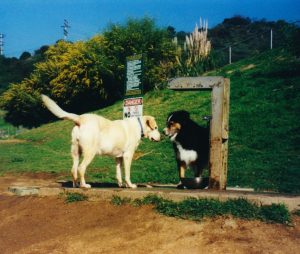 How much water is enough?
How much water is enough?
Consistent output (of urine that is) is a good indicator of normal water consumption. Judging just how much water your cat or dog drinks is a more difficult feat than determining the amount of food consumed as water spills, evaporates and some of your feline’s daily quota may be gotten from a bathroom faucet or fountain. Multiple-pet households makes calculations even more difficult.
Small dogs require 2 quarts a day while a large dog may drink a gallon or more. On average, cats eating a primarily dry kibble-type diet should drink noticeably more water than cats eating a wet food – makes sense. “Hydration needs depend on an individual cat’s metabolism, daily activity, ambient temperature and humidity. In general, the numbers commonly cited range from 45-60ml/kg/day, so a good rule of thumb,” Bales suggests, “is a cup to a cup and half per day per cat.” Having developed the NoBowl Feeding System™ for cats, veterinarian Bales states, “Stress from indoor lifestyles is showing to be more concerning than food type. Current research suggests that how you feed your cat is just as important as what you feed your cat.” That is why she has created a way to feed that gives cats back the opportunity to hunt (on our terms, since we fill her device with food of our choice), exercise, maintain a healthy weight and enrich their indoor environment.
Dehydration clues in the Litter Box & Backyard
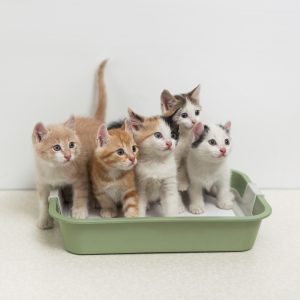
Observing pets for changes in their drinking behavior is a PURRfect start. It is in fact First-Aid 101 as knowing what is normal more quickly helps you determine when something is not! Knowing how often and how much urine a cat produces daily can clue you in to potential problems. Clumping litter makes it easy to know the number and size of urinations while other types of litter will require you to count the number and size of wet spots before you scoop or stir. On average, cats produce 2-3 handful-size urine balls daily. Cats are creatures of habit, so even in a multi-feline household, with a little observation on your part, you can likely determine which cat pees in which area of which box. The take away here is to scoop at least once daily and be observant to all and any changes. With your dog, that means paying attention and not being on your cell phone so that you can watch for squats or leg raises and take note of the color.
“Cats are very opaque about illness,” says Colleran. “They don’t demonstrate obvious symptoms so we need to look for what is different about this cat at this time. If the cat is producing smaller “balls” of clumped urine in the litter box or much larger ones than is normal for her, there may be a significant health problem.”
It’s also important to pay attention to the poop. Notice color, consistency and shape. Most adult cats defecate once every 24-36 hours while dogs about twice a day. Spying feces resembling a Tootsie Roll candy (Did I just ruin that childhood pleasure for you?) is a good thing! Dark brown in color, well-formed and moist enough that litter or dirt will stick to it. Odor? Well, eh yes, but it shouldn’t be so bad that you run away screaming.
First-Aid
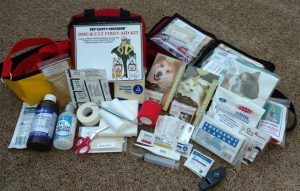
Additional signs that your pet may not be consuming enough water and warrant a veterinary visit include:
- Lack of elasticity in the skin (remains tented when gently pinched at nape of the neck)
- Dry flaky skin
- Increased thirst and/or urination
- Decreased urination
- Urination in inappropriate places (may not be able to reach the litter box or outdoors if need is urgent)
- Bad breath
- Sunken eyes
- Lack of appetite
- Increased heart rate
- Depression or lethargy
All of the above signs could mean something is ‘not-quite-right’ but can point to a number of causes. Only your veterinary professional knows for sure, but taking a Pet First-Aid Class could help you spot trouble!
How much water is too much?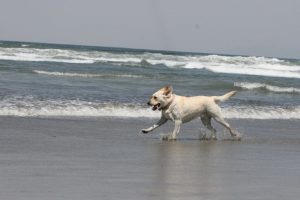
WATER TOXICITY (Hyponetremia) occurs when dogs that repeatedly dive into water with their mouths open trying to catch a ball can and ingest larger quantities of water than you might suspect. Drinking too much causes electrolyte levels to drop, thins blood plasma and leads to swelling of the brain and other organs. Running/hiking dogs may tank up on too much fluids as well. This electrolyte imbalance can be fatal, so as mentioned above, give small rest breaks allowing pet’s respiration to achieve normalcy in a shady environment before consuming fluids. Also give pets a time-out from the water frequently.
Should you notice and of the following, administer electrolytes and get to your veterinarian at once:
• Lack of coordination
• Nausea/vomiting
• Lethargy
• Bloating
• Dilated pupils, glazed eyes
• Pale gums
• Excessive salivation
• Difficulty breathing
• Collapse
• Loss of consciousness
• Seizures
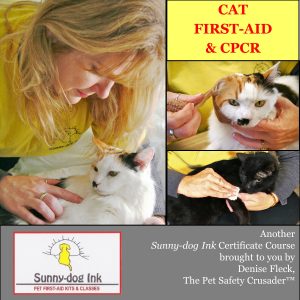
To learn Cat-specific First-Aid, sign up here:
http://www.petsafetycrusader.com/shop/classes/cat-first-aid-cpcr-webinar/
To learn for dogs, cats, rabbits, pocket pets or birds, there’s a class for you here:
http://www.petsafetycrusader.com/products/classes/
Drinking too much or too little could indicate urinary tract issues, tape worms, diabetes mellitus or hyperthyroidism. Many elderly pets develop a condition which causes their kidneys to function less efficiently. By making sure young animals don’t stress their kidneys by drinking too little water you just might help preserve their kidneys for a longer lifetime.
Please also view my VLOG on this topic: https://youtu.be/F5Gq54nrqBk
__________________________________________________________
For 20 years Denise Fleck’s Sunny-dog Ink motto has been “Helping people to help their pets,” and she has…teaching more than 15,000 pet lovers animal life-saving skills and millions more on “The Doctors,” CNN, “Kirstie Alley’s Big Life,” Animal Planet and other TV shows. Denise is a frequent conference speaker, developed a line of pet first aid kits and now offers classes online.
Note: The articles on this page are copyrighted. Please do not reprint or use portions for any purpose without written permission from the author. Request permission for usage by sending an email explaining how you’d like to use the materials and what parts specifically. Thank you in advance!








